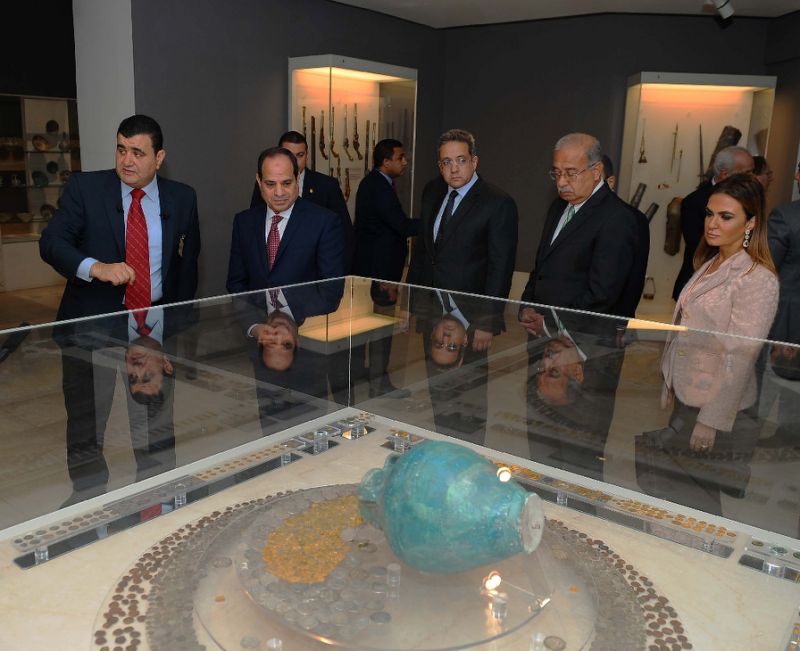Cairo – The Museum of Islamic Art, the biggest Islamic museum in the word has returned to life after three years of closure following a terrorist attack that targeted a security building near it in January 2014. The museum was inaugurated by President Abdel Fattah Al-Sisi, who watched a documentary on the establishment’s history.
Minister of Antiquities Khaled El-Enany briefed the president on the importance of this museum, the details of its renovation which was made as part of efforts to maintain humanitarian and cultural heritage of Egypt.
The President, accompanied by ambassadors of countries contributing in this renovation, inspected the museum and its possessions.
Egypt’s Museum of Islamic Art (MIA) first opened in Cairo’s Bab El-Khalq area in December 1903.
The idea of establishing this museum emerged in 1869 in the Khedive Ismail’s era. Caretakers of this museum faced many challenges recently like the display plan, which was adopted before the blast. The museum previously showed 1500 pieces only while myriads of pieces were hidden in the depot.
Official from the museum said works were implemented by Egyptian laborers and that renovation added three new showrooms to the museum, along with 16 new stands.
The museum is composed of two floors – its entrance features a big Mushaf and it also shows myriads of artistic pieces from different countries like swords, maps, rare historic monuments, and old weapons from the Islamic history.
In this context, Dr. Sahar Nasr, Egyptian Minister of International Cooperation said that the renovation of this museum is considered the biggest in the world and was conducted with the best standards to protect the safety of the rare pieces, which were damaged by the explosion.
